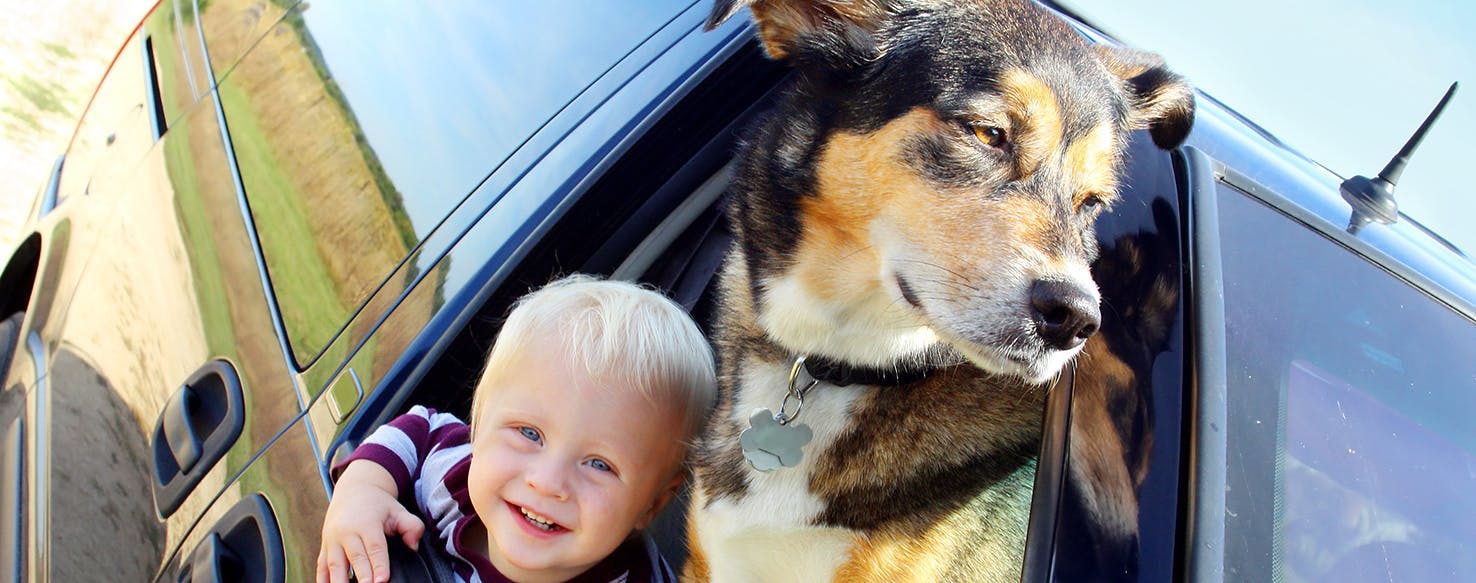- Home
- Dog Wellness
- How to Keep Kids Safe around Dogs... and Dogs Safe around Kids
3 min read
How to Keep Kids Safe around Dogs... and Dogs Safe around Kids

Save on pet insurance for your pet
You don't have to choose between your pet and your wallet when it comes to expensive vet visits. Prepare ahead of time for unexpected vet bills by finding the pawfect pet insurance.
Before you had kids, your babies had fur. But now your dog isn't the only focus of your attention, and you want the whole pack - both two and four-legged - to get along together.
Getting the interaction between kids and dogs wrong is not an option. Not only might a child be seriously injured or become fearful of dogs for life, but the dog may be labeled aggressive and destroyed - when the fault doesn't lie with them.
Keeping the whole pack safe and happy depends on a number of things, including understanding your dog's limits, knowing how your child reacts, and educating both kid and dog to behave appropriately. Here's how...
Know your Dog
When you know and understand your dog, you can reduce likely flashpoints and put safety strategies in place.
-
Breed: Think about your dog's breed tendencies. For example, herding dogs such as Collies have a strong instinct to chase and herd. Having a dog nipping at a kid's heels is frightening (although this is normal dog behavior, not aggression). Plan to distract, train, or tether your dog when in the company of a child.
-
Puppies: A puppy may play-bite, which is normal but unpleasant. Learn distraction and time out techniques to calm your puppy down. Also, teach your child what to do, such as offer the puppy a toy instead of a hand.
-
Older dogs: Mature pooches may have arthritis or dental pain which makes them wary of being touched and more likely to snap. Make sure your dog has a safe den to retreat to and teach your child to wait for the dog to come to them.
-
Character: Are they possessive over food or certain toys? If so, keep your child well away from those items while you get professional help to reduce your dog's guarding tendency.
Know your Child
Along with your child's temperament, they go through different stages of development depending on their age. For example, babies cry a lot, which can be worrying or distressing for a dog. A baby grabbing a handful of fur is then extra alarming, and could lead to a nip purely because your dog is fearful.
-
Toddlers: A rapidly moving, wobbly toddler may be seen as a threat by your dog. This is especially true if the youngster invades the dog's space. This is where constant supervision, and staying with your child when your dog is present, is essential - to prevent conflict from occurring.
-
2 - 5 years: These guys like to play… but your dog may not be as keen.
-
5 - 9 years: Children start experimenting with taking control, and may 'boss' the dog around.
-
9 - 12 years: By way of learning and experimentation, this is when games involving lack of respect may begin to creep in.
The short term essential is to always supervise kids and dogs together. You may need to step in, to prevent the normal behavior of one species becoming a problem for the other. Actively educate your child that dogs have feelings too, and need respect.
Training Children (and Dogs!)
It's crucial to teach children to:
-
Respect dogs and all animals
-
Read and understand basic dog body language
-
Know how to act around dogs
The classic example of misreading dog body language is the dog that rolls over to display their belly. This is a submission or appeasement signal, and a sign the dog is outside their comfort zone. When a child moves in to pet the dog's belly… they are further stressing that dog. 99% of the time the child will get away with it, but there's the 1% where the dog is so fearful, they snap...literally. Signs of stress in dogs that need to be respected are:
-
Lip licking
-
Turning the head away
-
Yawning
-
Raising a front paw
-
Leaning away from the person
-
Rolling over to display the belly
Teach your child to leave your dog alone when they see these signs. Explain they must wait for the dog to come to them.
Keeping It Fair
Of course, kids benefit so much from the companionship of dogs, but just be sure you're being fair to everyone - both two and four-legged. The basic rules are to supervise them together, and teach your child to wait for your dog to come to them. By doing this, peace may not reign in a house with young children, but at least it will be a safer place.
You may also like
